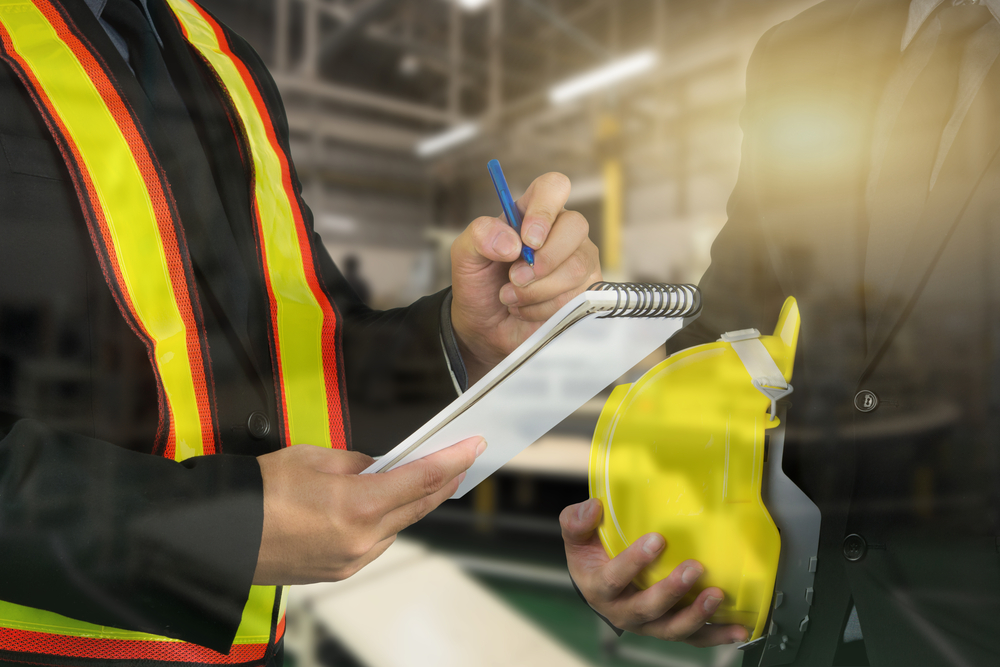How to Prepare for an Osha Inspection

A visit from OSHA is a real cause for concern. Even a single violation can result in a costly fine up to tens of thousand of dollars. If you have a track record of violations, or one that causes a serious injury or death, it gets worse. For example, OSHA fined the supermarket chain Wegmans $188,000 for repeated safety violations. Knowing what to expect during an OSHA inspection can help you avoid penalties and foster a culture of safety in your workplace.
The best way to avoid accidents and other situations that would trigger an OSHA inspection is to have top-notch training and certification. CertifyMeOnline.net has a full selection of training courses and complete certification programs for your entire aerial work platform (AWP) and mobile elevating work platform (MEWP) fleet. Register your company today and enjoy the numerous benefit that come with 100% OSHA certification, including:
• Total preparedness before and during an OSHA inspection
• Knowing what an OSHA inspection consists of
• The latest safety standards and guidelines, explained in an easy to learn format
• Lifetime support
• Affordable prices
• And much more
CMO prepares your company for all interactions with OSHA, including what to do during an OSHA inspection. CMO knows the ins and outs of OSHA, including a total understanding of their day-to-day functions. If you know how to prepare for an OSHA inspection, you can take steps to protect your business. Part of this has to do with making sure your aerial lift operators are trained and certified.
What Triggers an OSHA Inspection?
OSHA inspections aim to enforce health and safety regulations in the workplace. While the agency makes frequent changes to their guidelines, safety goals remain consistent. Each kind of lift, AWP, and MEWP pose unique challenges when it comes to safety. Any company using this kind of equipment may be subjected to greater scrutiny that other kinds of enterprises.
The following may trigger OSHA inspections:
Imminent Danger
OSHA inspectors are frequently compelled to visit a workplace following accidents, injuries, and fatalities on the job. These can happen in the construction industries, but are common in all industrial settings. Any time danger is imminent, an OSHA inspection is likely.
Direct Complaints
Complaints from employees may also trigger an inspection. Employees have the right to report to OSHA completely anonymously. If your company is facing OSHA penalties, it could stem from a complaint filed against your organization. Companies are entitled to a written copy of such reports, and you can always decline an OSHA inspection if you don’t believe there is probable cause.
Programmed Inspections
Does OSHA have to give notice before an inspection? The answer might surprise you. Regularly scheduled (“programmed”) inspections occur in heavily regulated industries like manufacturing, construction, shipping, and other workplaces that require the use of heavy machinery such as AWPs and MEWPs. In this instance, at least you can create your own OSHA inspection checklist to ensure you have all your bases covered.
Sometimes, the answer to the question “when does OSHA inspect” is more straightforward than you’d think. Regularly scheduled (“programmed”) inspections occur in heavily regulated industries like manufacturing, construction, shipping, and other workplaces that require the use of heavy machinery such as AWPs and MEWPs. In this instance, at least you can create your own OSHA inspection checklist to ensure you have all your bases covered.
In most cases, OSHA inspections occur without advance notice. Employers have the right to require compliance officers to obtain an inspection warrant before entering the worksite. If OSHA contacts you about an inspection, you can say no. OSHA must then obtain a warrant to conduct the inspection.
OSHA will provide advance notice of an inspection for only a few reasons. These include:
– Urgent safety matters
– Accidents that involve fatalities
– Scheduling conflicts with managers
– When “special preparations” are needed
The Components of an OSHA Inspection
Knowing what to expect during an OSHA inspection can help you prepare in advance. Regardless of whether the inspection has been schedule in advance, expect the following three steps:
1. Initial Call
When the OSHA compliance officer shows up at your door, he or she will:
– Explain the purpose of the inspection
– Ask to meet with management and workers
– Check the log of work-related injuries and illnesses
– Conduct a walkaround of the work site
– This process can take anywhere from 30 minutes to a few hours.
2. The Walkaround


The walkaround phase of the OSHA inspection could also deal with employee training records. OSHA may ask to see worker human resource files, including training credentials. If you have untrained aerial lift operators, OSHA penalties are likely. OSHA may levy a costly fine if safety violations of this kind are discovered.
During the walkaround, OSHA can inspect the following areas related to aerial or scissor lifts:
– Mechanical operation
– Maintenance plans for scissor lifts, AWP, MEWPs, cherry pickers and more.
– Employee training records
Anything that is out of compliance in these areas can be deemed a violation.
3. Closing Meeting
Finally, the OSHA inspection concludes with a discussion of violations and how to eliminate them. The inspector may set deadlines for repairs and warn about OSHA penalties at stake. Keep detailed notes from this meeting to ensure compliance moving forward.
What to Expect During an OSHA Inspection
With a basic understanding of what happens during an OSHA inspection, you and your team can prepare for anything. It’s important to manage expectations during the process. While OSHA has the right to inspect, employers have rights, too. Under the Fourth Amendment, OSHA cannot inspect unless they have probably cause to do so. Employers can demand inspection warrants to clarify what triggered their inspection. Reasonable scope of inspection is often negotiable. With such an agreement in place, it is often in the employer’s best interest to waive the warrant right and agree to the OSHA inspection.
Make no mistake: OSHA officials will inspect your workplace with an eagle eye. It’s their job to identify hazards, take notes and photos. They’ll determine compliance with OSHA health and safety regulations, and ensure workers are properly trained and certified. Employers have the right to accompany inspectors and ask questions about how to correct issues. The OSHA inspection should minimize work interruptions but officials may take time to interview workers.
Training: The Most Effective Preparation
There are more ways you can prepare for surprise OSHA inspections. These include:
– Have clear, written safety policies and procedures
– Maintain a clean, organized work site
– Remove hazards when possible
– Mark hazards that can’t be removed with warning signs
– Keep aerial lifts and other equipment well maintained
– Make sure all aerial lift operators are trained and certified
As you can see, these aren’t preparation tasks. They are things you should be doing every day. So if you get hit with a surprise inspection, your risk of being out of compliance will be low.
In other words, you can get the necessary training to safely operate your equipment from CMO. As you can see, these aren’t preparation tasks. They are things you should be doing every day. So if you get hit with a surprise inspection, your risk of being out of compliance will be low.
Now that you know what triggers an inspection, what inspections involve, what happens during an OSHA inspection, and your unique rights as an employer, it’s clear that a comprehensive safety program is a requirement in today’s heavily regulated environment. CMO has all the training and certification you need to ensure positive, productive, professional communications with OSHA in the event of an audit or inspection.



Get Trained with CMO Today and Be Prepared During an OSHA Inspection!
The benefits of OSHA training are numerous, avoiding expensive fines chief among them. Our OSHA-inspection compliant training provides everything you need to ensure compliance, awareness and enhance overall safety, from information & training to create your own company OSHA inspection checklist to complete training and certification for your entire aerial lift fleet.
Keep your workers and your business safe and compliant. Give our aerial lift experts a call today at (602) 277-0615, or check out the contact page.